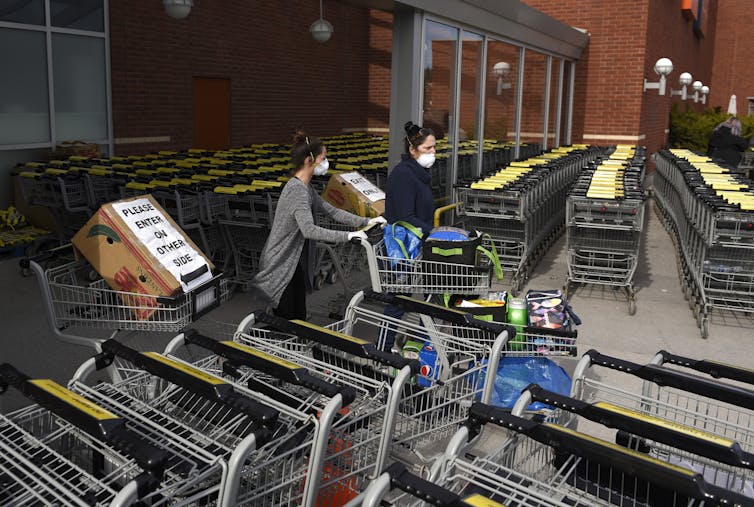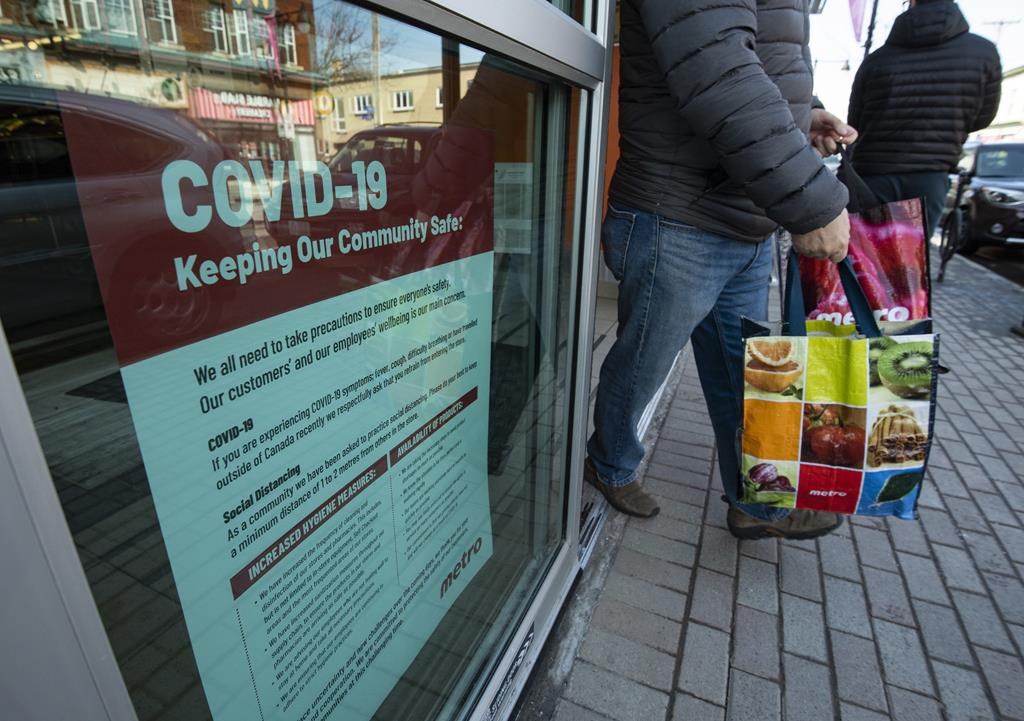What does a post-pandemic economy look like? Health researchers are indicating that managing this virus will be a long-term game. That means COVID-19 will impact the economy for months, maybe years, but reopening businesses cannot wait until the virus is completely eradicated.

Estimated lost wages from the locked-down Canadian economy range between $3 billion to $6 billion per month. Many Canadians are worrying about more than infection; concerns about affording rent and everyday necessities are pervasive. Restarting businesses is not only important for the social well-being of Canadians but also for restoring investor confidence in the market and generating much-needed tax revenue.
Germany has just started to make small steps by reopening small shops. Understanding when and how to reopen businesses may be the most challenging task of this pandemic. Reopening too soon risks a second wave of infections and a far greater negative economic impact.
However, not allowing companies to promptly reopen will lead to a deep recession and is already fuelling societal unrest. Successfully re-establishing businesses in a COVID-19 economy requires government, health-care and business leaders working together to implement a phased return to employment.
READ MORE: Canada’s GDP shrank by 9% in March amid COVID-19
Phase 1: Our current situation — working from home or remaining unemployed
The first phase is the one in which we now find ourselves: working from home or unemployed. Many professional and business-to-business companies have learned to facilitate working from home using web-based technology over the past few weeks.
This has been critical in reducing COVID-19 transmission, but it’s not sustainable in the long term. So what’s next?
Phase 2: Resuming small-scale operations
The next phase is a suppression approach involving reopening and supporting businesses where virus transmission can be easily controlled.
Workplaces that have adequate space for physical distancing, easy access to soap and water and the ability for continuous cleaning of all public areas should be encouraged to reopen. These businesses can learn from those that remained open during the lockdown.

This might require that businesses operate with reduced hours until they can assure regular and thorough cleaning of their workplaces.
In a pandemic, short-term age discrimination may also be justified. Employers should be encouraged to rehire younger people after they’ve been tested, while governments continue to provide financial support to older workers and those with chronic health conditions, since younger people are less likely to be hospitalized due to COVID-19 infection.

Get daily National news
Success in this early phase is dependent on rapid testing of employees displaying symptoms, including a potential self-testing kit and the quick return of results. Employers must keep reminding employees to stay home if they are not feeling well, while governments must continue to provide easy and quick access to insurance for lost wages.
In the meantime, employees have a responsibility to limit their social exposure when they’re not at work. The goal must be to keep the transmission rate a low as possible.

Phase 3: Expanding to social events
The next phase should begin within a month of lowering the infection rate to acceptable levels, a number that still hasn’t been established. There is ongoing development of models of transmission in different-sized and types of groups, and as more is learned on how to ensure low infection rates, businesses and organizations can expand operations carefully.
This could mean allowing more customers into stores and restaurants at one time, allowing small social gatherings and reopening some education and recreation facilities. Professional sports leagues could resume, either with relatively few or no spectators. Whatever the expansion looks like, maintenance of new cleaning and social and physical distancing practices needs to be ensured.

Phase 4: Domestic tourism
The final phase should focus on rebuilding domestic tourism and Canada’s reputation as a safe country for its citizens to explore.
Airlines and hotels should have appropriate cleaning and hygiene practices ready to go. Reopening the border could be considered for those countries that have also controlled transmission of the virus.

During this phased-in approach, governments need to go beyond providing financial stimulus packages. Businesses also need to be supported in training workers on safety and sanitation precautions, and must facilitate the development of technologies that monitor workplace social distancing and tracking of interactions that could lead to virus transmission.
Governments and health-care experts must also continually monitor and provide updates on transmission rates. Success is dependent on everyone being informed.
READ MORE: Recession or depression? Length of global economic standstill likely to decide
Public trust in business is critical. Canadians have effectively responded to this pandemic. To ensure ongoing co-operation, they need to know there’s plan for getting people back to work.
COVID-19 will not be the last health threat to the Canadian economy. Our focus needs to shift from controlling risks through economic shutdowns to managing health-related threats in the workplace. Otherwise disastrous economic downturns will continue.
The response to COVID-19, in fact, should become a learning opportunity on how to develop more illness-proof economies.Loren Falkenberg, Senior Associate Dean, Business, University of Calgary and Jillian Walsh, Graduate Student, Health Economics, University of York
This article is republished from The Conversation under a Creative Commons licence. Read the original article.








Comments